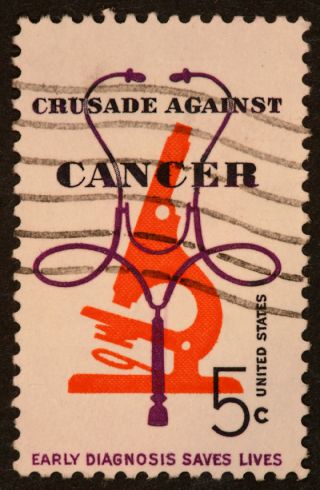Hormones
Cancer Risk and Weight: Our Body and "Pathologies of Space"
What do we know about the relationship between excessive weight and cancer?
Posted March 21, 2015

In her book Illness as Metaphor, Susan Sontag writes, “Metaphorically, cancer is not so much a disease of time as a disease or pathology of space. Its principal metaphors refer to topography—cancer ‘spreads’ or ‘proliferates’ or is ‘diffused’…” Ironically, body fatness (i.e., obesity or even overweight) can be seen as a “pathology of space” whereby fat ‘spreads,’ ‘proliferates’ or is ‘diffused’ throughout the body as well. Is there more than a metaphorical relationship between increased weight and cancer? There are many studies to suggest there is a strong association, and this potentially translates into a major public health concern.
With more than two-thirds of the adult population in the U.S. considered clinically overweight or obese, many researchers suggest it is imperative that the relationship between obesity and cancer be elucidated. For example, as prevalence rates for cigarette smoking continue to fall among some populations, obesity-related cancers “may become the largest attributable cause of cancer in women,” according to Renehan et al, writing in a 2010 issue of the International Journal of Cancer. More recently, Booth et al, in the journal Hormone Molecular Biology and Clinical Investigation (2015) noted that it is now estimated that at least 20% (and “this may be an underestimation”) of all cancers worldwide are caused by excess weight gain. Of course, though some researchers like Renehan and colleagues, use the word “cause” because of the time frame involved, consistency of findings, and plausibility of the association, actual causation is difficult to prove. The World Cancer Research Fund and the American Institute for Cancer Research note, instead, that body fatness is an “established and important risk factor for many cancers.”

The mechanisms that underlie the association between greater body fatness and a higher risk of cancer are not completely understood. They seem to involve hormones such as insulin and insulin growth factors (IGF-1 and IGF-2) that lead to cancer promoting effects such as cell migration, invasion, and metastatic spread; the sex steroid hormones (e.g. estrogen, progesterone, testosterone); and even hormones produced by adipose tissue, a highly active endocrine organ itself that secretes many hormones including leptin that can have carcinogenic activity and adiponectin that can reduce carcinogenic activity. In general, chronic low-grade inflammation leads to increases in “pro-inflammatory” cytokines such as tumor necrosis factor-alpha and interleukin 6, that, in turn, stimulate the production of C-reactive protein (CRP), a systemic marker of inflammation. Essentially, the theory is that dysfunctional adipose (fat) tissue creates a microenvironment that is conducive for tumor development. The heterogeneity in the effects with different cancers and different patient subgroups, though, suggests that different mechanisms are involved.

Nimptsch and Pischon, though, in the journal Hormone Molecular Biology and Clinical Investigation (2015) explain that these “pathways are not exclusive, but rather interrelated with each other in a complex and not full elucidated manner.” These researchers note that there is “convincing” epidemiological evidence that body fatness is associated with a higher risk of six types of cancer: colorectal, postmenopausal breast cancer, endometrial cancer, esophogeal adenonocarcinoma, renal cell carcinoma, and pancreatic cancer. And there is “growing evidence” that body fatness contributes to the development of ovarian cancer and advanced prostate cancer. For some cancers, like colorectal, abdominal (i.e., visceral) obesity, specifically, is an independent risk factor, though it is not yet certain whether it is an independent risk factor for other types of cancer. Bhaskaran et al (2014, Lancet) explored the relationship between body mass index (BMI) and the risk of cancer in a population-based cohort study of 5.24 million adults in the UK. These researchers found that BMI was associated with 22 different cancers. Each 5 kg/m2 increase in BMI (over a normal weight of a BMI of less than 25 kg/m2) was associated with cancers of the uterus, gallbladder, kidney, cervix, thyroid, and leukemia. “Assuming causality, 41% of uterine and 10% or more of gallbladder, kidney, liver, and colon cancers could be attributable to weight.”
Most studies use BMI as their measurement of body fatness. James et al (European Journal of Cancer, 2015), though, cautions that BMI is only a “surrogate marker of body composition” and not a reliable measure of body fat because it does not take into account differences in the proportion of lean mass and fat. Furthermore, body composition is impossible to measure directly and accurately in a clinical setting, and it varies with sex, ethnicity, and age. Because fat in the abdominal area is more endocrinologically active, waist-to-hip ratio or waist circumference should be measured as well as BMI, but in many studies these measurements are not taken.
Lee et al (Clinical Endocrinology, 2014) note that “cumulative epidemiological evidence” would suggest that overweight or obese subjects are not just at increased risk of developing certain cancers: in those who have developed cancer, obese patients tend to have worse prognoses and are more apt to suffer recurrences. Diagnoses can often be missed or delayed in these patients, and there may be more surgical and radiotherapy complications. Back in 2003, in her classic study (published in The New England Journal of Medicine) of more than 900,000 U.S. adults, with over 57,000 deaths from cancer in those initially free from cancer (with 16 years of follow-up), Calle et al noted that those with BMIs of 40kg/m2 or more had death rates from all cancers that were 52% higher in men and 62% higher in women than those of normal weight. Ungefroren et al (2015, Hormone Molecular Biology and Clinical Investigation) found that increased levels of insulin seen with obesity can interfere with the therapeutic effects of chemotherapy; furthermore, obese patients may not even receive the correct dosage of medication (i.e., may be under-dosed.)
Bottom line: There are still many unanswered questions regarding the connection between excessive weight and cancer. For example, we don’t know the cumulative effects of excess body weight over several decades (including overweight and obesity beginning in childhood) as well as interactions with other risk factors. Nor do we understand all the mechanisms involved in sex differences and differences across ethnicities. And we don’t know conclusively whether effective interventions to reduce BMI (e.g. such as with bariatric surgery) will have a protective effect from overall cancer risk. Nevertheless, body fatness is, like Sontag’s description of cancer, a “pathology of space” and until proven otherwise, is a major risk factor for many forms of cancer.
Note: See below for the image of the Japanese Sumo wrestler. There is an actual pathological complex process called SUMOylation that seems to promote the development of certain cancers, though the mechanism is not completely understood. It is suggested that the protein SUMO itself may be a potential therapeutic target to treat cancer eventually. (Bettermann et al, Cancer Letters, 2012)



